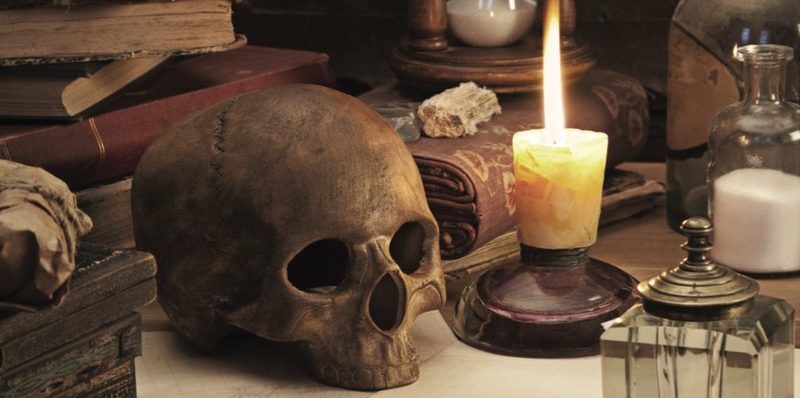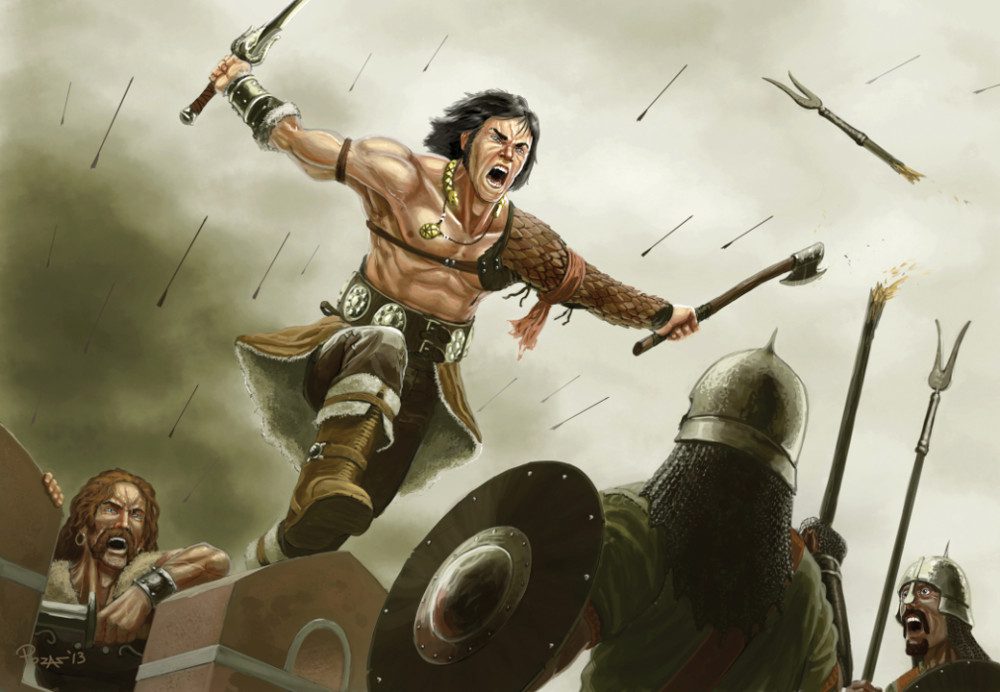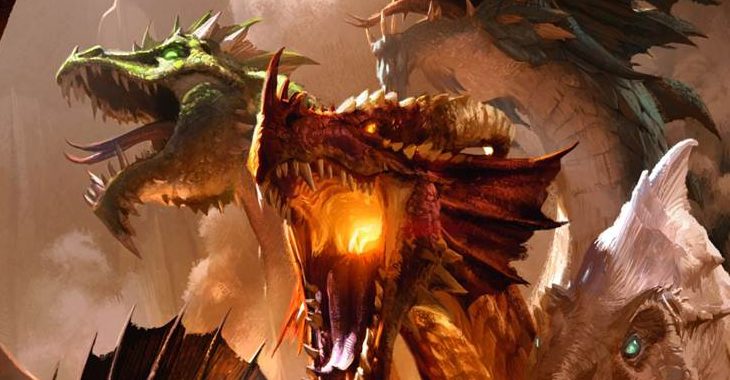The Artificer Class, Part Six

Today I’m finishing my exploration of Rich Howard’s Alchemist class, with the Irezumi, Metamorph, Poisoner, Pyromancer, and Re-Animator subclasses. Have I mentioned that Rich created an impressive array of subclasses? The best part, though, is how none of them tread on one another, conceptually or mechanically.
Part Zero | Part One | Part Two | Part Three | Part Four | Part Five | Part Six
Irezumi
Magical tattoos are one of those recurring ideas in gaming, because they’re a recurring idea in real-world legends. For that matter, I remember being just so impressed when I played Planescape: Torment and got cool tattoos for the Nameless One. (I’m playing PS:T Enhanced Edition right now.) Anyway, the Irezumi tattoos people and imbues the tattoos with magic.
- The bonus formulas lean heavily on buffing and shapechanging effects, with a surprising amount of conjuring along the way. They’re a gameplay grab-bag until you flip your perspective to what kinds of tattoos people like to get, and everything snaps into focus. Animals. Weapons. Thorns. It’s clever and I am into it.
- Skin Staining gives you proficiency in tattooing supplies, and the ability to create single-use body art. So henna, basically – once the target activates the mixture or you take a long rest, the image fades.
- Living Art grants you two cantrips from any class’s list, which you tattoo onto yourself. I like that your alchemist cantrips are also permanent tattoos.
- I’m not statting my friends and loved ones based on their ink right now, no sir. That would be weird.
- Mystic Art at 6th level is a non-spell-slot way to hand out a wide variety of hour-long buffs. The tattoo goes in one of four locations (arms, head, legs, or torso), and gets one of the effects available in that location. Then an Irezumi (not necessarily the one who created the tattoo) charges the tattoo, so that the tattooed creature can activate it as an action. Limit one per customer. The buffs are mostly low-end, though I have to admit that advantage on checks with a particular skill has a tough time competing with resistance to one damage type.
- Enhanced Artistry at 10th level lets you put a second Mystic Art tattoo on the same creature. They can both be on the same body part.
- Empowered Tattoos at 14th level let you place one of your bonus formulas of up to 4th level on a creature as a tattoo. It doesn’t cost you a spell slot or need charging. After the subject casts the spell and its duration ends, they also take a level of exhaustion, because it was their own life force powering the spell. The Irezumi can ignore this exhaustion cost for their own empowered tattoo once per long rest. Even at 14th level, an extra 4th-level spell is great to have – even if you have to decide on it well in advance.
- Master Inker at 18th level is a lot like Empowered Tattoos, but the spell can be up to 6th level and it costs 2 levels of exhaustion. As before, the Irezumi can ignore this cost for themselves once per long rest. An extra 6th-level spell slot is huge at every level of play. No one ever regretted an extra mass cure wounds or true seeing up their sleeve, let me tell you.
Overall, the Irezumi is a demanding playstyle requiring more pre-planning than most. This is true of a lot of crafting- or inscription-oriented classes or subclasses, so it’s not a surprise. Rather, it’s something to know going into the subclass. With good party coordination, you can make sure everyone in the party has the right tool for the job. For some players, that’s an addictively satisfying playstyle. I wish the 10th-level feature were a little more exciting, and I wish the playstyle-defining features could start coming in at 3rd level. Those are, however, minor critiques in what is otherwise a compelling subclass.
Metamorph
Alchemical mutations are the name of the game for metamorphs, starting off temporary and becoming longer-lasting as you advance. This is absolutely a concept I’d expect to see supported in any alchemist class. As with all of these subclasses, you’re doing some of your own creative work to imagine how an alchemical mixture produces each spell effect. Here, you’re turning some or all of yourself into other things.
- The bonus formulas are mostly things you’d expect, though I found simulate death (feign death is not in the SRD because… the 5e SRD can be startlingly arbitrary) and modify memory just a little more surprising. There’s a heavy emphasis on spells with obvious physical effects.
- Mutagen is a fascinating and clever way to handle a Mr. Hyde or Hulk transformation. For the cost of one 2nd-level slot, you get enhance ability (one of Str, Dex, or Con), alter self, and mage armor for 1 hour. They all share a single Concentration duration, up to 1 hour. You also gain disadvantage on ability checks with one of Int, Wis, or Cha for the duration – another way to sell that Hulk transformation.
- Chemical Fortitude at 6th level lets you use Int in the place of Con for your hit points at each level, and your HD recovery when you take a short rest. That’s an awesome idea to support “I turn into a combat brute” without going super deep on multiple-attribute dependency. (You still need good Strength and/or Dex.) I feel like there are a lot of Spider-Man and Batman rogues that this obliquely represents as well.
- Enhanced Mutagen at 6th level lets you spend a 3rd-level slot rather than a 2nd, gaining a second alter self benefit and another point of AC from mage armor.
- Superior Mutagen at 10th level adds a second enhance ability effect (still limited to Str/Dex/Con) and tacks on stoneskin to your mutagenic concoction, at the cost of a 5th-level slot.
- Enduring Mutagen at 14th level adds a bunch more features: regenerate, better natural weapons from alter self, advantage on Concentration checks (this is crucial, and should possibly come in earlier), and the duration stretches out to Concentration, up to 2 hours. This goes for a 7th-level slot.
- The Beast Within at 18th level finishes off your mutagen, at the cost of a 9th-level slot. In additional to all of the other stuff you’ve accumulated, you get all three enhance ability effects for Str/Dex/Con, another point of mage armor, another point of magical damage bonus from alter self natural weapons, and two more hours of duration.
My one significant concern with this playstyle is that it relies heavily on its melee attacks, but it doesn’t offer Extra Attacks or a way to blend attacks and mixture use. It also needs both a good Dex (for AC) and a good Strength (your unarmed attacks don’t get to use Dex). On the other hand, I love the action and slot efficiency improvements of the whole series of features. It’s possible that you can cover the gaps here with your other mixtures in a way that I’m not seeing, but the competition for Concentration makes that a lot harder.
Poisoner
The story here really tells itself – I expect a kind of magical assassin, that would be incredibly popular with some of my player group. You make other things too, of course – you can be both the poisoner and the party healer with cure wounds, which makes me very happy.
- Your bonus formulas and poison-damage mixtures are the only things that are automatically classed as poisons. You can cover a heck of a lot of Batman villains with this list – phantasmal killer and weird for Scarecrow, confusion for the Mad Hatter, cloudkill and contagion for Poison Ivy…
- Poisonous Formulas grants proficiency with the poisoner’s kit and 6 free doses of basic poison that you made as part of leveling up.
- Subtlety grants proficiency with Sleight of Hand and Stealth, lets you apply blade poisons as a bonus action, and makes your basic poisons much better. You can also add a certain je ne sais quoi to basic poisons someone else made, to bring them up to the level of ones you make.
- Poison Expert at 6th level improves the DC of poisons you make to your standard mixture DC. It also improves your poison-harvesting ability – if that ever comes up in your campaign.
- Poison Mastersmith at 10th level improves your downtime poison crafting, adds 1 round of the poisoned condition to your basic poisons, and when you succeed a saving throw against poison that includes “save for half,” you instead take no damage. Evasion, but for poisons. This is a great trio of features.
- Empower Contagion at 14th level lets you touch either a creature or a dose of poison, and expend a spell slot of 7th, 8th, or 9th If you touch a creature, they suffer disadvantage on saves against poison and disease for a period of time based on the slot level. If you touch a dose of poison, it imposes disadvantage on saves against it and it ignores poison resistance (but not immunity); higher-level slots scale up the number of doses you can affect at once, and reduce the effectiveness of poison immunity.
- Blighter at 18th level lets you crank up the danger level and difficulty of cleansing a poison of 7th level or lower by using a 9th-level slot to cast it. I’m not completely sure this is a good payoff for the cost involved, but you’ve got a lot going on by this point. For that matter, I like that the highest-level feature isn’t the thing I want most, so that I don’t feel as bad about multiclassing this with Assassin rogue. I’m not always a fan of multiclassing and what it does in the game, but this is the world’s most natural multiclass choice.
I adore this subclass, and I won’t be at all surprised to see a player start one as an alternate character in my campaign very soon. It’s very much a debuff/support rogue, of a kind that I think 5e has lacked. It also puts me very much in mind of the Plague Doctor from Darkest Dungeon.
Pyromancer
Do you like blowing things UP? Do you love the smell of NAPALM in the MORNING? This is the alchemist for you!
- The bonus formulas are big damaging evocations and conjurations. There are fewer formulas than other subclasses, but with fireball on the list, you’ve got to ask yourself if you care.
- Craft Explosives lets you change up damage types of your evocations, so you’ve got a workaround for a wide range of resistances and immunities. You do have to make this choice when you prepare mixtures, so make sure you spread things out at the start of each day. You have a limited number of uses per day to modify your cantrips.
- Energy Dampening at 6th level grants resistance to one of several different explosion-friendly energy types, which you can change as part of a short rest.
- Explosives Expert at 10th level adds your Intelligence to the damage of your evocation mixtures. Never a bad time for 4-5 more points of damage, especially on an AoE.
- Advanced Weaponry at 14th level is a sort of metamagic effect, giving you a way to burn a slot of 7th level or higher for a mixture of 2 levels lower with added range, or changes to the area of effect. Two of these are more involved forms of the Evoker wizard’s Sculpt Spell feature.
- Empowered Blast at 18th level lets you use your 9th-level slot to impose disadvantage on saves against your mixtures of 7th level and below. It’s hard to want to use this feature when meteor swarm is on the line, I would say.
Overall I really like the Pyromancer. I think that holding off on their version of Sculpt Spells makes life a lot harder. Evoker wizards probably should have something like Energy Dampening. More than many alchemist subclasses, the Bonus Formulas list is a huge part of the draw here. If you want to blow things to tiny pieces while also doing other general alchemist stuff, this one’s for you – and friend, that should be a pretty easy sell.
Re-Animator
I assume I don’t need to explain the endless number of characters that fit this villain archetype. (But it’s also a fun antihero – and again with shades of the Plague Doctor.)
- The bonus formulas are both the “nice” and “naughty” sides of necromancy – raising, animating, contacting, or creating the (un)dead; power word murder spells; and so on. It’s a lot of the primary-healer functionality that you want other than cure wounds.
- Practice Makes Perfect lets you start your reanimating practices early. You get find familiar, always undead-like in form (though not fully undead in type), with the additional options of the crawling claw (oh my god, we can stat the Addams Family now, I’ve never been happier!) and the homunculus.
- Anatomist doubles your proficiency bonus with Medicine checks, and gives you a modest scaling amount of Sneak Attack (+1d6 each time you gain a subclass feature from Re-Animator, so a total of +5d6). Early gameplay with this subclass is going to be challenging, as you’re spread pretty wide but not amazing at any one thing.
- Re-Animate at 6th level makes your undead into quasi-techno-undead. They’re resistant to turning, and paladin Divine Smites don’t do extra damage to them. By this point, if you don’t have an undead creature other than your familiar with you in every fight, you’re probably making a mistake. All told, this is a minor feature for a player, because there just aren’t that many NPCs that even can turn undead or cast sunbeam or whatever.
- More Than Human at 10th level grants advantage on saves against disease, poison, and the frightened condition – things to which the undead are often immune. You can also gain something like vampiric vigor – resistance against damage from nonmagical weapons and advantage on ability checks, for 1 minute per long rest. This is a good all-around feature, though it could probably get away with being a touch stronger still.
- Adam… at 14th level lets you create or claim a flesh golem when you cast create undead with a slot of 7th level or higher. Well that’s boss as h*ck. Also, I love the explicit Frankenstein reference here.
- and Eve at 18th level lets you create or claim a second flesh golem (!), or two revenants, when you cast create undead with a 9th level slot. This is an absolutely phenomenal final feature. My only concern is that running multiple pets in a combat can really slow things down. It also means you’re tying up that 9th-level slot until you don’t want those pets anymore, which is… unlikely. So using this feature means never casting your delicious new power word kill or true resurrection.
I find this to be a solid subclass, with a lot of decision pressure at the top end. Don’t choose this unless you’re absolutely sure the rest of the party will be okay with having undead or constructs in the party, and give it a pass in very large parties (where combat is already slower, so pets make it worse).
Conclusion
While I’ve offered a few critiques here and there, I think there’s incredible cleverness on display here. I appreciate Rich’s recognition that a narrative description of spells to include esoteric devices is 90% of the work. The Artificer is only one subclass here, but the Irezumi, Pyromancer, and Re-Animator could be a subclass in any artificer class that gets published.
To be clear, I don’t receive any percentage from sales of this product. During D&D Next and early 5e, I spent a good bit of time working on an alchemist class of my own, but this text achieves everything I would have wanted from my own efforts, and then some. This is an entirely worthy 13th core class, but there’s also a lot to be said for a campaign setting where the alchemist is the only full caster class.



